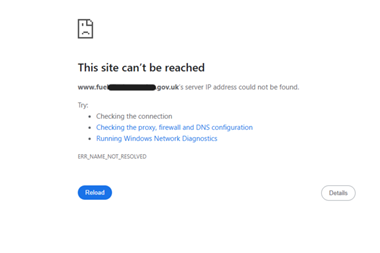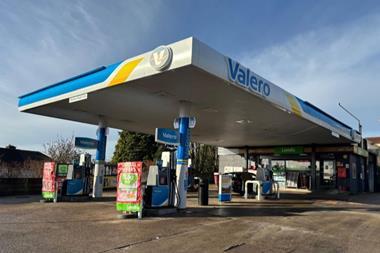Biofuels are here to stay and they’re giving some retailers one almighty headache. Contamination primarily caused by water in unleaded and bugs in diesel tanks and pipes has sparked spates of vehicles breaking down, leaving retailers to deal with the consequences.
And as the percentage of bio content in road fuels is only set to increase along with rising government targets for biofuel volumes, the problems could potentially be exacerbated.
Nigel Plumb, director at DP Fuel Tank Services, says: "The properties of biofuels that are now being included in virtually all petrol and diesel are causing a range of problems for many petrol retailers. These problems are only going to increase as the percentages increase.
"While there is a head of steam building up on both sides of the Atlantic against the increase of the percentage of biofuels in normal petrol and diesel to 15% adding even more confusion to an already confused issue the fact is that there is already a 5% bio element in all road fuel. This means we already have a problem that needs solving."
John Davis, director of Cyrus Energy, which produces the Eradicate biocide to combat contamination, agrees that a higher percentage could exacerbate problems. "There are those who think an increase in biodiesel automatically means an increase in diesel bugs. I think that’s possible if the conditions where they can grow remain as they are."
Davis adds that it’s possible the problem with microbial contamination has already worsened over the past year. "Sales of our Eradicate biocide have increased," he says. "This may show more of an incidence of infection or more awareness of our product. I do have more new customers who, until now, did not have this before so that would suggest a problem that is gathering momentum."
Generally speaking, contamination can come from various sources: silt and gravel, rust flakes and metal particles, debris from tank walls and linings, thick organic sludges and slimes, as well as bacteria in diesel and water in petrol.
It causes severe operational problems: it can be transferred from storage tanks up to the pumps, contaminates and clogs suction lines, blocks pump filters and, if it gets through pumps and into vehicle engines, it may cause damage to engine components.
Water in the tanks is the biggest contamination issue in unleaded storage because if there’s no water and therefore no oxygen there can be no bio-contamination, claims Keith Norman, director at Petroman Environmental Services. "By elimating water you can eliminate most contamination issues," he says. "Water contamination can be a very serious issue. Tanks need to be prepared before ethanol blends are delivered firstly cleaned and then de-watered. If they are not cleaned, the ethanol will scour and flush the rust and debris from the tank walls and floor and through the pipework and up to the pumps causing blocked filters.
"Water in tanks can cause phase separation if enough water is present in the bottom or ends of the tank," adds Norman. "This is a process whereby the ethanol within the unleaded fuel readily absorbs any water and then separates away from the unleaded fuel into a layer sitting at the bottom of the tank with the petrol layer on top. This bottom layer can cause damage to car engines if drawn up to the pumps, so it has to be removed as a matter of urgency, and if there are several hundred or even thousand litres, this can be a very expensive exercise."
Water can enter the tanks in a number of ways. Sites with a high water table are most at risk, and tanks receiving ’hot’ product can experience condensation caused by temperature differentials or by moist air entering through vent pipes on diesel tanks. "Sites most at risk from ground water should have regular monitoring of tank chambers," advises Norman. "If water is present it should be removed on a regular basis, ensuring all tank-lid fittings are water tight. If in doubt, test the tank lid for leak tightness." To minimise the problems, retailers should employ a specialist to accurately assess each tank to determine the most appropriate treatment for preparing tanks for biofuels and instigate regular planned preventative maintenance. This should include fuel sampling and regular water checks to ensure tanks remain water and contamination free."
When it comes to biodiesel, Norman says there’s no permanent cure for bacterial contamination it is a question of managing and controlling it in an efficient and cost-effective way. "In our experience, once our customers have been made aware of the potential seriousness of these issues, they have taken it on board and reacted in a positive way to prepare their tanks for biofuels," he says.
"The process of instigating planned preventative maintenance to manage these ongoing issues on a permanent basis has generally not been as easy to encourage retailers to commit to.
"Our best advice is to use the most appropriate process for each individual tank there is no one single treatment that works for all conditions by using tank and fuel sampling from all parts of the tank floor, we can get the most accurate picture of the condition and can then advise and make recommendations to the customer, who we encourage to be on site when we carry out the work. They can then make an informed decision about any ongoing work."
To help forecourt operators find their way, DP Fuel Tank Services has published a 10-point plan for dealing with biofuel problems, using a simple step-by-step approach. The first four steps identify the key symptoms of contamination pumps running slowly, filters continually clogging, pump motors burning out and customers’ vehicles breaking down followed by solutions.
The first step is changing filters, DP recommends. "Changing filters can manage the sludge or bacterial problem in the short term," says DP’s director Nigel Plumb.
"Depending on frequency, changing filters does not solve the problem. To be cost-effective you may need to consider the next solution, which is fuel testing. A test will show just what problems you have and their extent.
"As well as testing for particles and bio-contamination it is worth testing the specific gravity of the fuel. Normally, water in the fuel is reasonably obvious but biofuel absorbs water and masks the problem."
The final steps are tank cleaning, fuel polishing, and scheduled maintenance. "All the advice from the US and Australia, where they have had biofuels longer than we have, is that it is vital to have a clean tank when dealing with biofuel," says Plumb.
"If the volume of fuel and contamination is such that it cannot be sold through, or its safe disposal would represent too much of a financial loss, it is worth considering fuel polishing.
"This is where contaminated fuel is sucked out of the tank and put through a series of filters to clean it. Finally, the best way to head off future problems is to schedule a programme of cleaning."
Another solution to contamination is the use of a fuel additive.
Cyrus Energy’s John Davis says that biocides like Eradicate provide an effective shock treatment for contamination. "In Eradicate’s case you have options. Shock treat when contamination is obvious, check the fuel or new deliveries with a dip-stick test. Prevent water entering the fuel supply thereby providing an environment where bugs can live and multiply. Thereafter some clients dose at half strength as a prevention."
Petroman, meanwhile, recommends the Bio-Klenz fuel additive. "Bio-Klenz is a biodegradable detergent and not a biocide," explains Norman. "It absorbs water in fuel, prevents bacterial build up, disperses sludge, increases intervals between filter cleans and helps maintain clean tanks and lines. It is suitable for all hydrocarbon fuels, can be used in storage tanks and vehicle tanks, and should be used as part of a range of treatments and planned maintenance."
Whatever the problem, the key is to act fast at the first signs of contamination and initiate a regular programme of maintenance for all tanks and pipework. Doing so could save you a fortune in costly clean-ups caused by fuel contamination and time spent restoring motorists’ confidence in your fuel.
pipe works
Franklin Fueling Systems, which acquired PetroTechnik in September last year, has introduced an innovative clear inner lining made of natural ethylene vinyl alcohol (EVOH) to achieve Class T1 temperature rating with its new EN14125-approved Universal Petro Pipe (UPP).
Class T1 strength signals reliability and performance as the new UPP primary pipe is rated for use in temperatures ranging from -40ºC or 50ºC.
A spokesman for Franklin Fuelling Systems says: "As fuel piping has evolved over the years, advances in technology continue to increase protection against fuel vapour incursion into the surrounding environment. Metal piping has given way to monolayer flexible piping, which in turn has been overtaken by multilayer extruded piping. Throughout this evolution, chemical engineering technology has proffered new combinations of materials that provide continually higher levels of protection. The advanced properties EVOH resin will play a major role in the future of semi-rigid piping."
Used for years in the food packaging industry to provide a barrier against aroma leakage and to maintain freshness, resins offer vapour resistence properties that are superior to their HDPE and nylon alternative.
For installations requiring an extra level of protection, UPP EN14125 pipe with EVOH inner lining combines with the UPP Secondary Pipe to form "an enhanced level of protection".
Underground storage
When it comes to making decisions on underground storage investments, Keith Norman, director at Petroman Environmental Services, recommends retailers consider installing the largest possible tanks to provide as much ullage space as possible.
"This will enable retailers to consider investing in vapour management systems that can save vapour on every delivery and convert it to liquid product," says Norman. "The more ullage, the more vapour they can save. Approximate savings of 0.15% are achievable on our VMC system that is a purely mechanical system very reliable, no power, very low maintenance and a very good return on investment."
Retailers should also consider having tanks installed, if possible, on a very slight gradient with an access port in the tank at the lowest end. "This would make it very quick and easy to remove any contamination or water that is usually located down at each end," explains Norman.
"Try and ensure that future grade changes would be easy to effect by installing a manifold on the vapour recovery system that makes it easy to swap vent pipes around."
Contamination fact file
How is contamination caused?
l Any water provides oxygen for the bacteria to grow
l Hydrocarbons provide rich nutrients
l Biofuels accelerate the bacterial growth
l Lack of light
What symptoms does it cause?
l Slow dispensing
l Nozzles ’spit’
l Fuel spillages from nozzles
l Nozzles shut down
l Frequent pump filter cleans
l Frequent engineer visits
How should tanks be prepared for biofuels?
l Accurately assess the tank condition
l Employ the most appropriate treatment tank by tank, as recommended by a fuel storage specialist
l Eradicate water and sludge
l Eradicate the source of the contamination
l Initiate planned preventative maintenance
l Manage and control the issue there’s no permanent cure
Source: Petroman
Baffle restoration
If the move to 15% biofuel (E15 petrol and B15 diesel) goes ahead, it is likely that some vehicles will not cope with the higher levels, so multiple grades may need to be offered on each forecourt. So says Nigel Plumb, director at DP Fuel Tank Services. "Over the past couple of decades, as the number of fuel grades has reduced, one of the things we have been asked to do is cut holes in the baffle plates (partitions) of dual compartment storage tanks, to make them one tank," explains Plumb. "If the 15% level goes ahead we are expecting to be asked to go back and restore those baffle plates." To have baffle plates restored, the tank needs to be drained and all vapour removed.
Depending on how the baffles were cut initially, they can then be restored with fibreglass or through welding. The level of disruption caused by the process will depend on the layout of the forecourt and how many pumps need to be closed to maintain a safe working perimeter.



























No comments yet